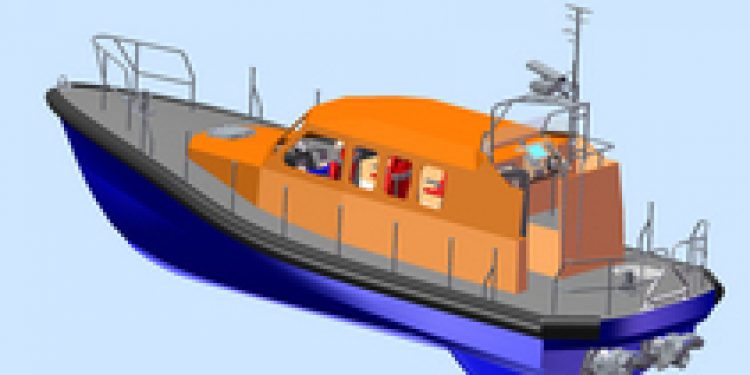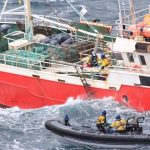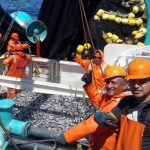The Royal National Lifeboat Institution (RNLI) has selected the new hull design for its latest class of all-weather lifeboat, the Fast Carriage Boat 2 (FCB2). After thoroughly testing six hull models, a design by the charity’s own Naval Architects has been chosen.
In 2008, rough-weather trials proved that the performance of the experimental FCB2 boat’s original hull design in rough seas did not meet the operational requirements for an RNLI lifeboat, especially when travelling up-sea in steep waves. The decision was taken to redevelop the hull. RNLI’s FCB2 Project Manager, Chris Eves, comments:
‘The RNLI is committed to providing its volunteer crews with the very best equipment to carry out their lifesaving role. The introduction of FCB2, the Mersey class’s successor, will ultimately mean the whole fleet of all-weather lifeboats have a 25 knot capability, meaning casualties can be reached more quickly and efficiently. After initial trials found the original hull on the experimental boat was not performing as required, it became clear a hull redesign was needed – our volunteer crews and people in danger at sea rely on the quality, safety and efficiency of RNLI lifeboats.’
The hull design was opened to tender. Seven designs were submitted – six from external companies and one from the RNLI.
Six scale models were then built and tested by Seaspeed Marine Consulting Ltd. These models, driven by twin waterjets – as FCB2 will be – were self righting, radio controlled and fully instrumented for both acceleration and motion in all three planes (vertical, transverse and longitudinal) and incorporated a small video camera in the wheelhouse at the coxswain’s position. To recreate realistic conditions, most of the testing was completed in open water in The Solent and Chichester Harbour, with extreme weather surf-zone testing in Poole Bay. Additional testing to back up the open water data was also completed by Seaspeed at QinetiQ’s Ocean Basin and Ship Tank at Haslar, Gosport. Qinetiq donated three days’ use of the tank to the RNLI, as the Institution is one of QinetiQ’s five priority charities selected by its employees.
The key performance criteria for the new hull was to the reduce up-sea slamming without compromising down-sea performance. All models performed well in varying elements of the specification, but the RNLI’s in-house design provided the best overall performance.
Chris Eves continues: ‘Although we have in-house Naval Architects, we wanted to open the design process to external organisations, to ensure we were considering all possible solutions. The models all performed well in trials, but the RNLI’s in-house design has been chosen as it provided the best performance across a wide spectrum of requirements. The outcome is perhaps an indication of the understanding the RNLI’s own Naval Architects have of the requirements of the charity’s volunteer crews.’
Having chosen a hull, the next stage of the lifeboat’s development is to optimise the hull form to further improve performance with fuel economy being an important factor. The hull will then be moulded and fitted out before completing sea trials scheduled for mid 2011.









